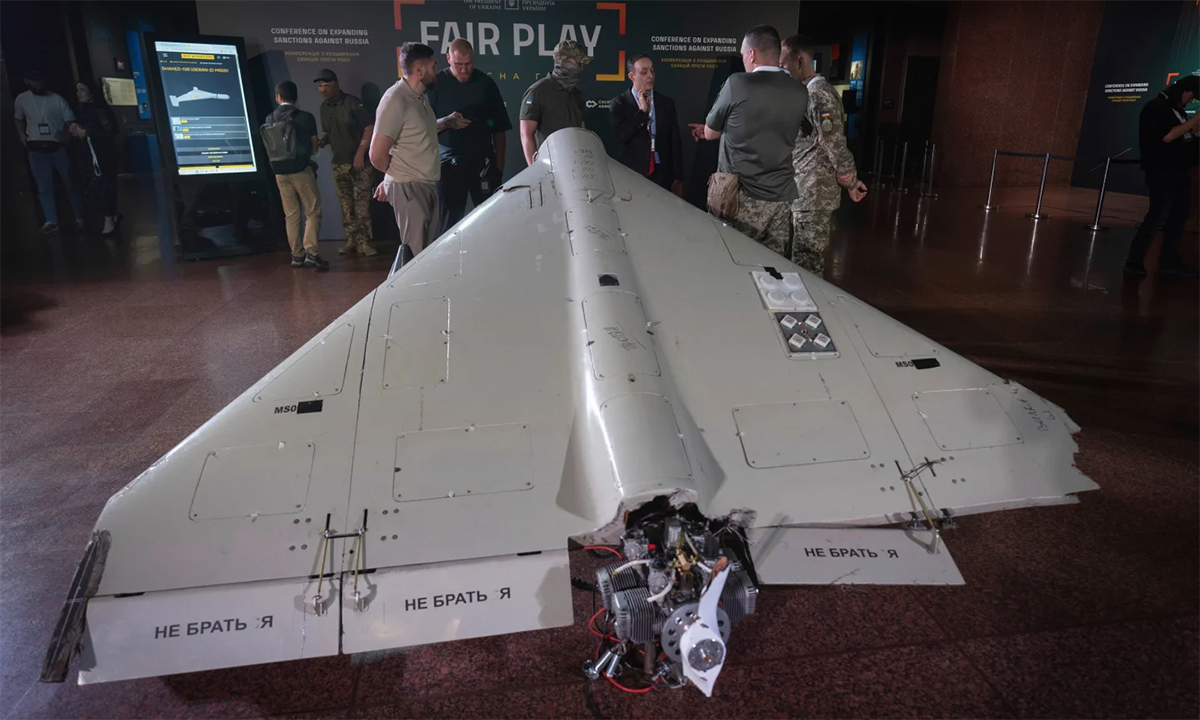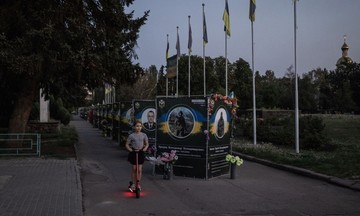Based on data from the Ukrainian Air Force Command, the Financial Times estimates that an average of 15% of Russia's Geran-2 suicide UAVs penetrated Ukrainian air defenses between April and June, a significant increase from the 5% rate of the previous three months. The number of UAVs Russia uses in each attack has also increased considerably.
"The repeated penetration of Ukrainian air defenses by Russian UAVs shows how large numbers of inexpensive aircraft can overwhelm multi-layered defense systems," the Financial Times reported, "and demonstrates Russia's ability to quickly adjust tactics to deplete Ukrainian resources."
Among the improvements Russia has implemented with the Geran-2 is adjusting the flight path, allowing them to fly faster and higher than before, beyond the range of Ukraine's mobile air defense units equipped with machine guns.
"The problem is not that Ukraine's air defense network is weakening. Rather, the swarm attack tactics and higher altitude flight capabilities make Russian UAVs more effective," said Yasir Atalan, an expert at the Center for Strategic and International Studies (CSIS) based in the US.
According to some experts, Russia has deployed the Geran-3 variant with a turbojet engine, which can fly at a cruising speed of 400 km/h and reach 800 km/h in a dive.
Oleksandr Matviienko, a UAV expert at the Ukrainian military website Counteroffensive Pro, said the number of Russian UAVs deployed hasn't increased significantly in recent months, but they are now focused on targeting one or two cities at a time, instead of spreading attacks across multiple urban areas.
"The UAVs fly very high, around 3,000-4,000 m, or extremely low, near the roofs of apartment buildings. Mobile air defense units with machine guns can't shoot down high-flying UAVs, while the targets become more difficult to detect at low altitudes," Matviienko said.
The significant increase in Geran-2 production also allows Russia to employ swarm tactics to overwhelm Ukrainian defenses. "The scale of the attacks overwhelms Ukrainian air defenses, increasing the hit rate," Atalan said.
In the attack on 9/7, Russia used a record number of 728 Geran-2 UAVs and decoys, in coordination with cruise missiles and hypersonic missiles, targeting locations in Ukraine.
Russia often uses UAVs to pave the way for missile strikes, further challenging enemy air defenses. According to the Ukrainian Air Force Command, the hit rate of Russian missiles appears unchanged, but this comes as Patriot missile supplies dwindle.
 |
Wreckage of a Geran-2 UAV at an exhibition in Kyiv, Ukraine, on 27/6. Photo: AP |
To address the shortage of air defense ammunition, Ukraine has developed specialized drones to intercept Russia's long-range UAVs. President Volodymyr Zelensky announced on 10/7 that Ukraine had shot down dozens of Geran-2 UAVs using interceptor drones, asserting their effectiveness.
According to Matviienko, to effectively intercept enemy UAVs, Ukrainian drones must have a ceiling of 6,000 m and reach speeds of up to 200 km/h, faster than the 185 km/h speed of the first-generation Geran UAVs. These drones also need an automatic guidance system in the final phase, when approaching the target, to avoid reliance on human operators.
Andrew Turner, a former British general and CEO of consulting firm Saibre Capital, said the development of Ukraine's air defense network exemplifies the ongoing competition between innovations in air warfare.
"It's a constant race between weapons development and defensive systems. In the Russia-Ukraine war, this race is happening at a very fast pace, reaching a new milestone every two weeks," he said.
Nguyen Tien (According to AFP, Financial Times, War Zone)












